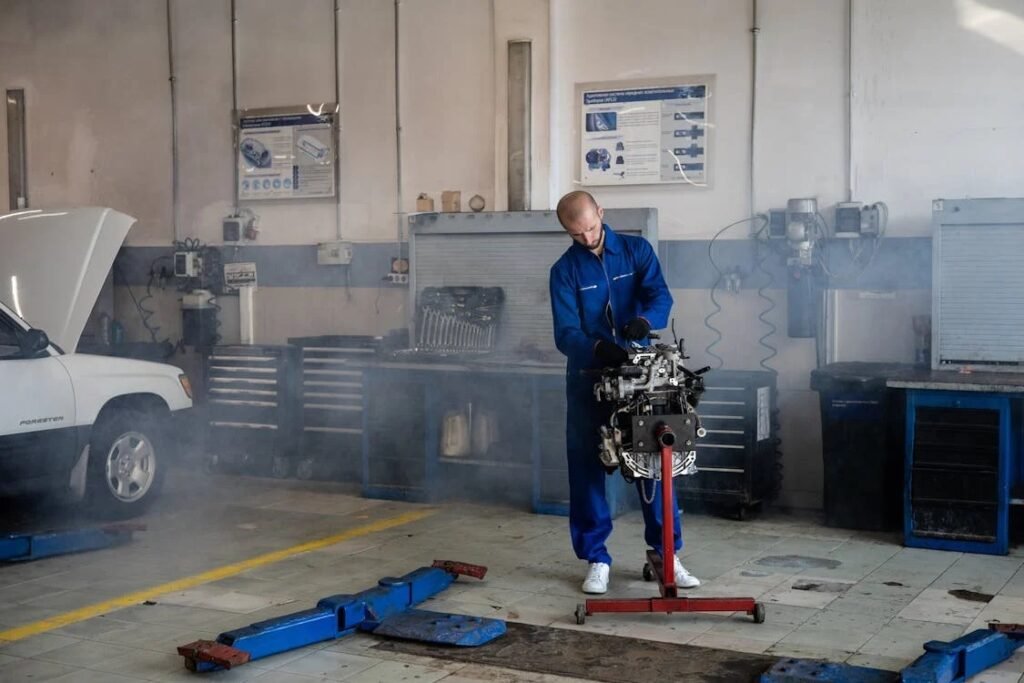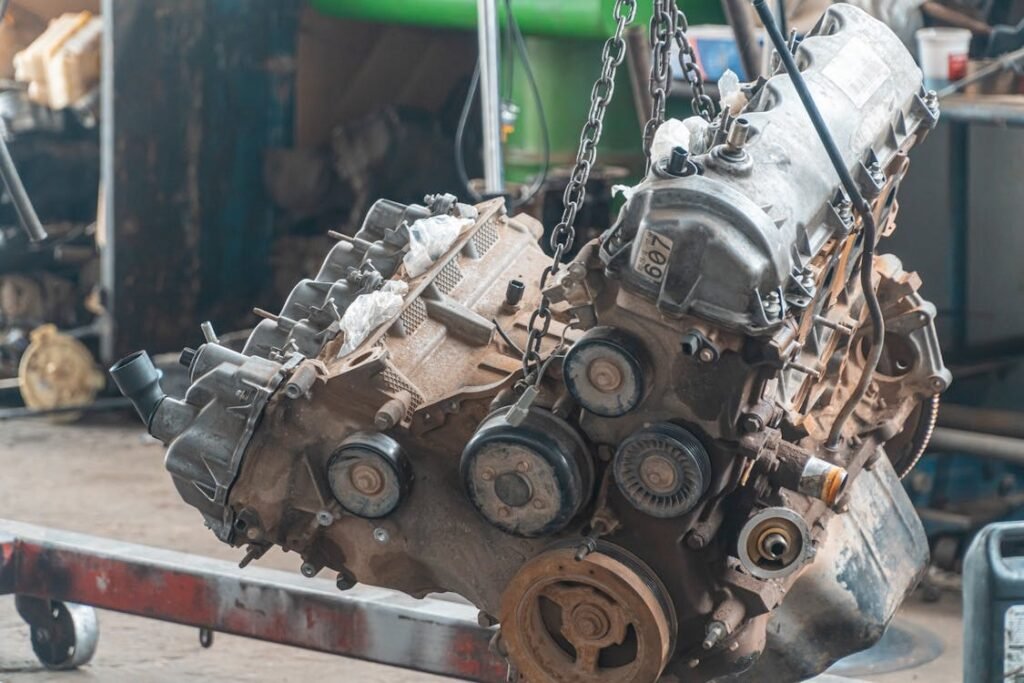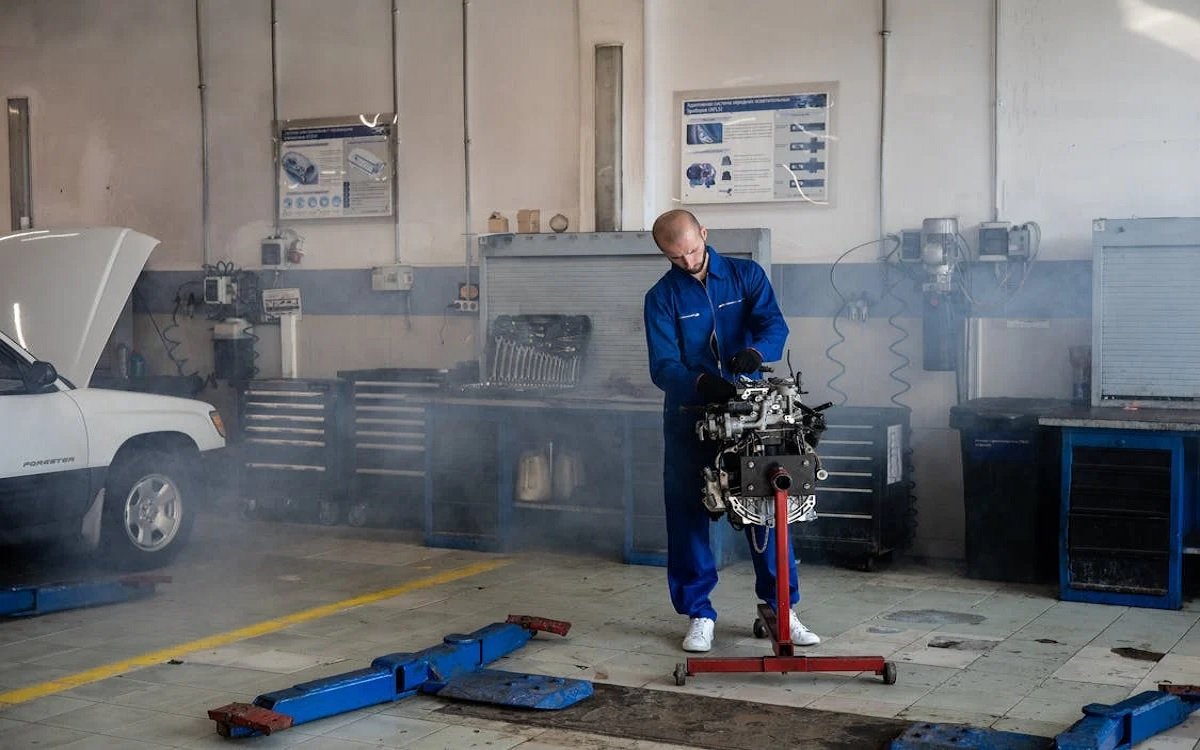Troubleshoot and Repair Coolant Leaks in Your American-Made Vehicle
Want Coolant Leak Fix to Your American-made vehicle? As a car owner, dealing with coolant leaks can be a frustrating and potentially expensive issue. Coolant is the lifeblood of your vehicle’s engine, responsible for keeping it at a safe operating temperature. When leaks occur, it can lead to overheating, engine damage, and even complete engine failure if left unchecked. In this comprehensive guide, we’ll explore the common causes of coolant leaks in American-made vehicles and provide you with practical tips and techniques for coolant leak repair and diagnosed them.
Recent Released: Car Maintenance Schedule App iOS
Identifying the Culprit: Common Causes of Coolant Leaks
Coolant leaks can stem from a variety of sources in your American-made vehicle. Understanding the most common causes can help you pinpoint the issue and take the necessary steps to address it.

Let’s take a closer look at the usual suspects:
- Damaged Coolant Hoses: The coolant hoses in your vehicle are responsible for transporting the coolant from the engine to the radiator and other components. Over time, these hoses can become cracked, split, or deteriorated, leading to leaks.
- Damaged Radiator: Your vehicle’s radiator is a crucial component that helps dissipate the heat absorbed by the coolant. Corrosion, debris, or physical damage can create holes or cracks in the radiator, resulting in coolant leaks.
- Leaky Coolant Reservoir: The coolant reservoir, also known as the overflow tank, is designed to store excess coolant and maintain the proper fluid level in the system. Cracks or damage to the reservoir can cause coolant to leak out.
- Faulty Radiator Cap: The radiator cap is responsible for creating a tight seal that keeps the cooling system pressurized. If the cap is damaged or worn, it can cause the coolant to leak out.
- Internal Leaks: Internal leaks, such as those caused by a faulty head gasket, can be more challenging to detect. These leaks allow coolant to enter the engine, where it is burned off, often resulting in white smoke and a strong coolant smell.
Diagnosing Coolant Leaks: Techniques and Indicators
Identifying the source of a coolant leak is the first step in addressing the issue.

Here are some effective techniques and indicators to help you diagnose the problem:
- Visual Inspection: Carefully inspect your vehicle’s engine bay and undercarriage for any visible signs of coolant leaks, such as puddles, fluid stains, or residue on hoses, the radiator, or other components.
- Checking the Coolant Reservoir: If the coolant level in the reservoir is low, it could be a sign of a leak somewhere in the system.
- Sniff Test: Coolant has a distinct sweet smell, so if you notice a strong, sweet odor coming from your vehicle, it could indicate a coolant leak.
- Temperature Gauge Monitoring: If your vehicle’s temperature gauge is rising, it could be a sign of a coolant leak that is causing the engine to overheat.
- Dashboard Warnings: Many modern vehicles are equipped with warning lights or indicators on the dashboard that alert the driver to low coolant levels or engine overheating, which may be linked to a coolant leak.
- Pressure Testing: If you’re unable to locate the source of the leak, you can use a pressure tester to check the cooling system for any leaks. This involves pressurizing the system and inspecting for any pressure drops or visible leaks.
- UV Dye: Adding a UV dye to the coolant and then using a UV light to inspect the system can help identify the location of a leak that may not be visible to the naked eye.
Repairing Coolant Leaks: DIY Solutions and Expert Advice
Addressing coolant leaks can range from simple DIY fixes to complex repairs that require the expertise of a professional mechanic.

Let’s explore some effective strategies for tackling coolant leaks:
DIY Coolant Leak Fixes
- Commercial Leak Sealant: For small cracks or holes in the radiator, a commercial leak sealant can be a quick and effective solution. These products typically contain chemicals that react with the coolant to form a sealant that plugs the leak.
- Epoxy Repair: If you can identify the specific location of the leak, you can use epoxy to seal it. First, thoroughly clean the area around the leak, then mix and apply the epoxy according to the manufacturer’s instructions, allowing it to cure before refilling the cooling system.
- Black Pepper Temporary Fix: In an emergency situation, you can use black pepper as a temporary fix for small leaks. Simply pour a few tablespoons of black pepper into the radiator, and the pepper will mix with the coolant to create a temporary seal.
Professional Coolant Leak Repair
For more complex or persistent coolant leaks, it’s best to seek the expertise of a qualified automotive technician. They can perform a thorough inspection, identify the root cause of the leak, and provide a comprehensive repair solution.

Some common professional repair methods include:
- Hose Replacement: If the coolant hoses are the source of the leak, the technician will replace the affected hoses with new, high-quality components.
- Radiator Repair or Replacement: In cases of a damaged radiator, the technician may need to repair or replace the entire unit to stop the leak.
- Coolant Reservoir Replacement: If the coolant reservoir is the culprit, the technician will replace the faulty component with a new one.
- Radiator Cap Replacement: A worn or damaged radiator cap can be easily replaced to restore the proper pressurization of the cooling system.
- Head Gasket Repair: For internal leaks caused by a faulty head gasket, the technician will need to perform a more complex repair, which may involve disassembling the engine and replacing the head gasket.
Preventing Future Coolant Leaks
Proactive maintenance and care can go a long way in preventing future coolant leaks.

Here are some tips to help you keep your vehicle’s cooling system in top condition:
- Regular Coolant Flushes: Follow the manufacturer’s recommended schedule for coolant flushes and replacements. This helps to remove any buildup of deposits or contaminants that can contribute to premature wear and tear on the cooling system components.
- Inspect Cooling System Components: Regularly inspect the hoses, radiator, coolant reservoir, and other cooling system components for any signs of wear, damage, or deterioration. Address any issues promptly to prevent them from escalating into larger problems.
- Use Recommended Coolant: Ensure that you’re using the correct type and concentration of coolant recommended by your vehicle’s manufacturer. Using the wrong coolant can lead to compatibility issues and accelerated component wear.
- Monitor Coolant Levels: Regularly check the coolant level in the reservoir and top it up as needed, following the manufacturer’s instructions. Maintaining the proper coolant level can help prevent leaks and overheating.
- Replace Worn Components: If you notice any signs of wear or damage on cooling system components, such as cracked hoses or a leaky radiator cap, replace them promptly to prevent further issues.
By following these preventative maintenance tips, you can significantly reduce the risk of coolant leaks and extend the lifespan of your vehicle’s cooling system.
Conclusion
Dealing with coolant leaks can be a frustrating experience, but with the right knowledge and approach, you can effectively diagnose and repair the issue. Whether you opt for a DIY solution or seek the expertise of a professional mechanic, addressing coolant leaks promptly is crucial to maintaining the health and performance of your American-made vehicle.
Remember, early detection and proactive maintenance are the keys to preventing Coolant Leak Repair Cost engine damage and ensuring your car’s cooling system continues to function at its best for years to come.
Table: Symptoms of a Failing Water Pump
| Symptom | Cause |
| Coolant Leaking | Leaking water pump shaft seal or mounting gasket |
| Rust or Deposit Build-Up | Non-compatible coolant or defective pressure cap |
| Noise | Loose accessory belt or worn bearings |
| Overheating | Inability to properly circulate coolant through the engine |
| Steam | Complete failure of the water pump, resulting in overheating |


Leave a Reply